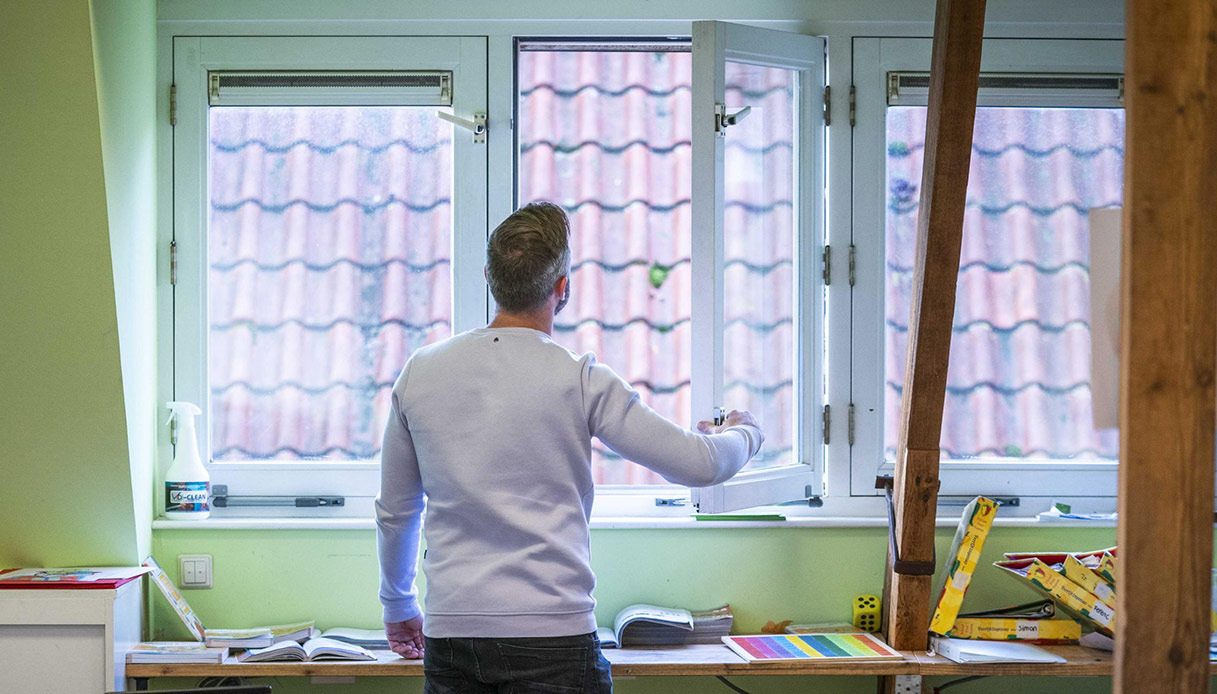We return to talk in Italy, in the face of the record increase in infections in recent days, of the importance ofventilation in closed places. The risk of contracting Covid is in fact particularly high in crowded and inadequately ventilated spaces where positive people spend a lot of time. These environments are those in which viral particles are most easily spread through respiration.
Understanding and controlling the ventilation of buildings can improve the quality of the air we breathe, and reduce health risks, including contagion from Covid indoors. TheWorld Health Organization in its roadmap on this topic, which contains the necessary measures to avoid, or at least limit, infections within.
Covid, where the rules for the ventilation of the premises apply
WHO has conducted specific research and evaluations covering three types of environments.
- Healthcare and hospital facilities.
- Non-residential buildings, such as workplaces, schools and universities, hotels and hospitality facilities in general, places of worship and shops.
- Residential buildings.
The institution considers two types of ventilation.
- Mechanics, both with air coming from outside, and with the disinfection and filtering of the recycled air.
- Natural.
Both are considered to be an effective way of reducing the concentration of particles potentially infected within a closed environment.
Covid, the rules of ventilation to prevent infections in the hospital
As regards the structures sanitary they hospitals, WHO recommends, through mechanical or natural ventilation, first of all, to ensure these continuous air changes.
- 160 liters of air per second per patient or 12 spare parts per hour in environments where procedures are performed that can increase the presence of aerosols in the air, such as tracheal intubation, tracheostomy, cardiopulmonary resuscitation, bronchoscopy, etc.).
- 60 liters of air per second per patient or 6 spare parts air per hour in the other rooms.
It is then necessary to make sure that the direction of the air passes from the outside or from areas not at risk to areas most at risk, and not vice versa. The exhaust air must be directed outside the building.
Air conditioning and recirculating air heaters should only be used after a precise risk assessment and with great care. All heating, ventilation and air conditioning systems must be subjected to constant maintenance.
Covid, the rules of ventilation to prevent infections indoors
As for the buildings non-residential, however, this figure must be respected.
- 10 liters of air per second per person.
To obtain an optimal air exchange, it is better to create a current with the circulating air from side to side, possibly using fans in front of the windows. Indoor air must be changed as evenly as possible.
Therefore, pay attention to the use of wall fans and ai conditioners, which can mix air and should only be used if the minimum ventilation requirements have been met.
Whether the building or the rooms I am empty at certain times, it is better to keep the windows open for at least 15 minutes between one use and another. Also in this case, if possible, it is a good idea to direct the exhausted air outside and check all the ventilation systems.
Covid, the ventilation rules to prevent infections in the home
The rules for the ventilation of residential buildings are meant for those who are facing the period of fiduciary isolation at home, and therefore refer to the spaces occupied exclusively by those who are positive for Covid. Therefore, they do not apply to the rest of the house, where in any case it is always good to observe proper ventilation of the rooms.
- 10 liters of air per second per person.
Also in this case the air exchange must take place in a manner as uniform as possible and all heating and air conditioning systems should be perfectly maintained in order to avoid contamination.
We must therefore be careful of proper air ventilation even if we have already been positive. Here who is most at risk of taking Covid again. There are also workplaces where more caution needs to be exercised. Here the workers most at risk of contracting the coronavirus. We have also explained here how to recognize the Ffp2 masks, now mandatory, certified.
.
